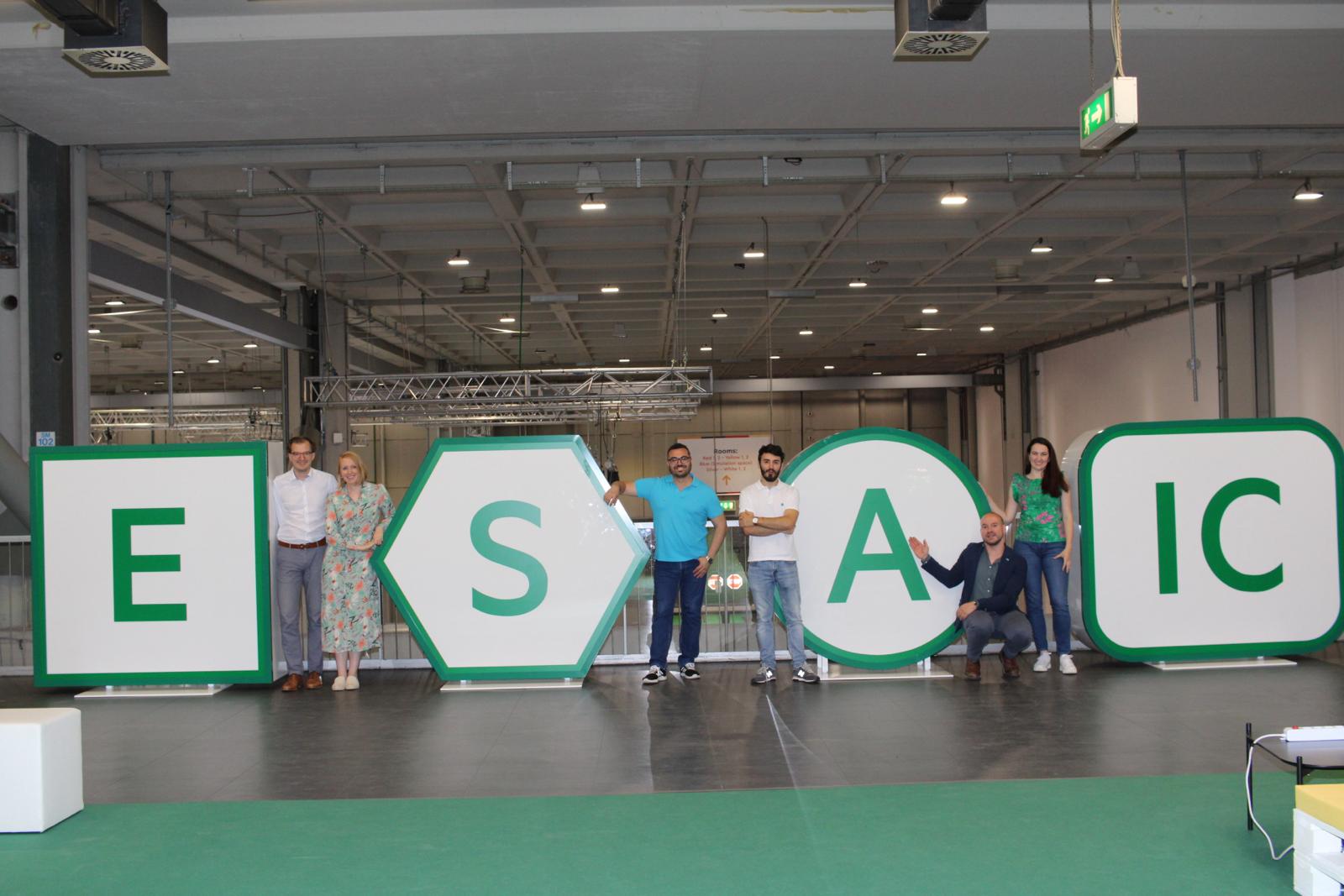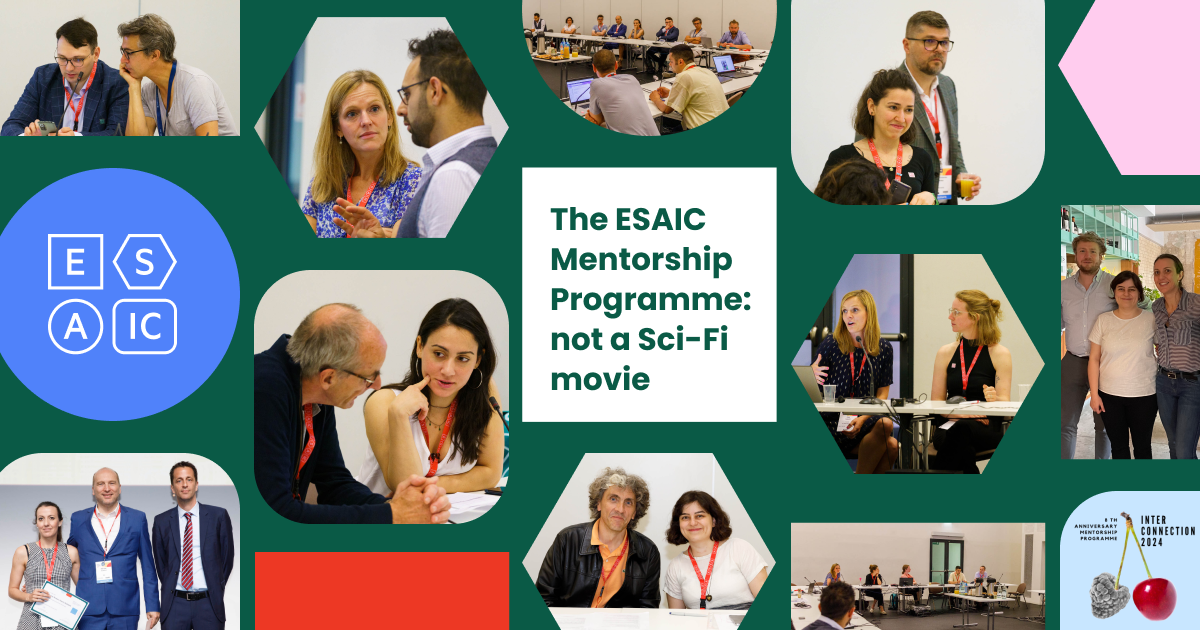ESAIC News
An update from the COVID-19 frontline: Italy
Dr Massimiliano (Max) Sorbello is a consultant in Anesthesia and Intensive Care based at the AOU Policlinico San Marco, Catania, in southern Italy. At the moment, while there are an increasing number of cases of COVID-19 in his hospital, they are nothing like those in the North of Italy, where colleagues he has known all of his career are fighting the battle of their lives to save as many patients as possible,
“We are still trying to understand everything that is going on,” he explains after finishing yet another extended shift at his hospital and fitting in numerous conference calls to colleagues all over the world. “We are not sure why we are having a much higher rate of deaths here in Italy than China. It could be many factors, including that we have an older population in Italy compared with China and other countries, and also different social habits. We are used to hugging and kissing during a greeting, while the Chinese maintain more distance. Do we in Italy spend more time closer together, in cars, bars and cafes? It is also possible we do not yet have complete data from China to do an accurate comparison.” He adds: “We need to remember that our mortality data are derived from a fraction where we don’t know the exact denominator (the total number of people infected). Aside from this, we need to wait for extensive, precise and targeted epidemiological data and studies to better understand this phenomenon, and probably this will be possible only later.”
He adds: “Normal life continued for too long in Italy. Cases were spreading very fast and now we have almost 60,000 confirmed cases and more than 5,000 deaths. It is a heavy, difficult situation. My colleagues are having make very tough decisions in their intensive care units, our hospitals are at breaking point and now not everyone can have the care we need. We have nowhere to put many patients.”
Italy’s brave medical workforce is close to breaking point. Max explains that even if more ventilators arrive to improve capacity, there are a limited number of medical personnel to operate them. Around 10% of medical staff in Italy are becoming infected with COVID-19. “One of my colleagues, she fell ill with COVID, and was treated in ICU. She has just been discharged and is desperate to return to work. But because of the infection, she cannot yet speak normally.”
He is also explicitly clear that countries should lock down as Italy has, as soon as possible. He has seen figures for the UK, that has the same numbers of deaths that Italy had 2 weeks ago, and looks to be going in the same direction. “We cannot stop the virus, this is nature,” he explains. “All we can do is try to manage the flow of patients, and slow the numbers of new infections, so that our health systems can cope. It is shocking to me and my colleagues how quickly the health system in Lombardy, one of the best in the world, has been overwhelmed. The battle now is to make sure that everyone who needs an intensive care bed gets one. To save as many people as we can.”
At his own hospital in Sicily, numbers are building, and there are fears that within one week, the epidemic could begin hitting as hard as it has in the North. “If we are fortunate enough not to get so many seriously ill patients from our own area – thanks to starting the lockdown here when there were no known patients – it is possible we will need to begin receiving others from different parts of Italy to help our colleagues cope,” Max says. “One of the things making treatment so difficult is separation of COVID patients from non-COVID patients. We
are trying to organise things so that whole hospitals are dedicated for COVID, while others treat everyone else. But this has its own issues.”
It is not just the length of the shifts that are leaving Max and his colleagues across Italy (and now also France, Spain and other countries) exhausted. “My colleagues have described in graphic detail how awful it is to work in protective equipment,” he says. “They feel hot, tired, and it is impossible to go the toilet. It is pushing all those who have to wear it to their physical limits. And treating the patients is really psychologically traumatic. They can decline quickly and become hypoxic. They are mostly full awake when we need to tell them we must intubate them, they are scared and crying.”
For those that do not survive, the trauma continues for their families. “Someone has lost a parent, in some cases it is the elderly parent losing their middle-aged child. You cannot hug them to say goodbye. They cannot have a funeral, and they must be quickly cremated to avoid any contagion. Their relatives are mourning, and yet in many cases they must stay in isolation themselves, possibly infected.”
He also explains that the nature of this pandemic is something which is completely unknown in modern times. In recent years, he has been part of international pandemic modelling exercises with other scientists and the Italian military. “This is a new infection, with no vaccine or specific drug treatments and uncertain modes of transmission,” he explains. “That means it requires a biosafety level 4 containment, the most serious there is. But we simply don’t have the facilities worldwide to contain it. That is why it is spreading like it is.”
Max is spending much of his time outside work on video conferences with colleagues both across Italy and in all corners of the world, as far away as the United States and Tasmania in Australia. “I am taking calls and receiving e-mails from colleagues all over the world. All colleagues everywhere are desperately trying to prepare themselves for what is coming. I am also working with colleagues to set up a data sharing platform so that we know as much as possible, as quickly as possible.”
Although it is hard, Max is also trying to see some of the positive things that have happened because of the pandemic. “Across Italy, accidents and trauma injuries are falling as people are not using their cars, or having accidents on their bikes. Pollution is falling in pretty much every part of the World. And from a medical point of view, we are making a huge amount of progress in understanding this virus in a very short period of time. We are seeing global co-operation on a far bigger and faster scale than happened during the SARS crisis of 2002. The virus is paradoxically making the world as one nation, the doctors and scientists all around the globe working and fighting together as one.”
Italian culture has been completely closed down by this new pandemic, and Max understands that his fellow Italians, including all doctors – are missing many of the things they have been taking for granted. “Everything we know from having a coffee in the morning together, to walking our dogs, watching football, going to concerts, hugging and kissing our family members…it has all been stopped. Many of us our self-isolating, hoping we are not infected but not sure we are not. The whole of Italy is at war, and we must do all we can to reduce the deaths as much as possible.”
Tony Kirby










